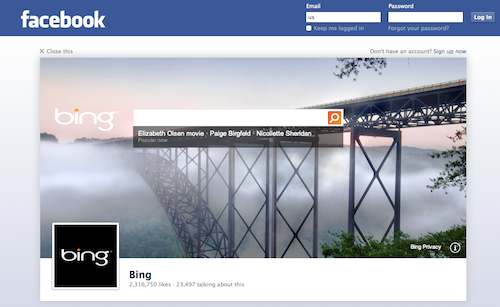 In terms of new Facebook developments, the last couple of weeks have been nothing short of huge for digital marketers. Sure, Timeline for Pages is a big deal, but of equal importance is Facebook’s new premium advertising platform, which not only introduces new types of ads—but also creates a deeper, more tailored approach to advertising that will likely have far-reaching implications for any brand that pursues a Facebook advertising strategy.
In terms of new Facebook developments, the last couple of weeks have been nothing short of huge for digital marketers. Sure, Timeline for Pages is a big deal, but of equal importance is Facebook’s new premium advertising platform, which not only introduces new types of ads—but also creates a deeper, more tailored approach to advertising that will likely have far-reaching implications for any brand that pursues a Facebook advertising strategy.
The 411 on Facebook Premium Ads
You’re likely well versed in what’s included with Facebook’s premium ads, but a quick recap never hurts. Facebook has enhanced its advertising platform to include several new types of placement. Long-awaited mobile ads have arrived, and businesses can also opt for large log-out ads that pop up when someone logs out of Facebook. Check out Bing’s log-out ad below.
Additionally, Facebook is encouraging marketers to think of ads as stories, a change that goes hand-in-hand with the company’s new approach to its premium advertising. The terminology switch isn’t merely semantic; instead, it’s designed to reflect the change in both ad content and interaction, which is where brands will start to see a major shift in how they deliver content to their audience—and how, in turn, their audience interacts with those messages.
What Facebook’s Premium Ads Mean for Brands
You probably also are aware of Facebook’s Open Graph and the introduction of a slew of new apps designed to make the Facebook experience more social. After all, “like” is fairly limited as far as truly measuring any kind of interaction. Facebook marketers and brand managers are now being encouraged to develop their own apps using Open Graph, giving consumers a chance to share specific actions that relate to the brand. Maybe they’re wearing a particular shirt, for example, or eating at a restaurant. As MediaPost sums it up, “Think advanced audience segmentation with a twist of social relevance.”
And that sort of deeper engagement is meant to translate to a brand’s Facebook ads, too. According to Facebook, “Premium on Facebook helps you maximize the number of people interacting with your brand and talking about you, while unlocking the power of fans and their friends.”
But it’s not just the new ad placement that’s important. It’s what the ads contain. Brands now have a chance to branch out and include images, videos and polls in an ad. They can serve as additional reflections of a brand’s status updates, rather than being limited to pre-determined text.
That shift in content signals a crucial evolution of a Facebook ad’s outcome. No longer are they simply a means to a transaction. Instead, the ads now encourage a relationship between a consumer and a brand, potentially building a relationship that will be more far-reaching (and profitable) than a single purchase.
Of course, these changes mean virtually nothing if brands aren’t willing to rethink their strategies and take advantage not only of new ad stories and placement, but also tools like the Reach Generator (which, for fixed pricing determined by your page’s number of fans, guarantees that a specified piece of content will be seen by at least 75 percent of your fans each month).
And that’s where brands have their work cut out for them. Not only is it necessary to reexamine your Facebook marketing strategy in light of Timeline for Brands (and, pssst, the clock is ticking), but you may need to revamp your advertising strategy, too. After all, you’ll need to think not just about what content you’re posting to your Facebook page, but what content you want to feature in your ad stories, too. For example, the log-out ad offers a large, prime piece of advertising real estate. And if your message isn’t deserving of that space, then your ads probably won’t be effective, despite the premium placement.
Have you advocated a different approach to Facebook advertising based on these new changes? I’d love to hear from those of you in the trenches.
Lead image via Business Insider
